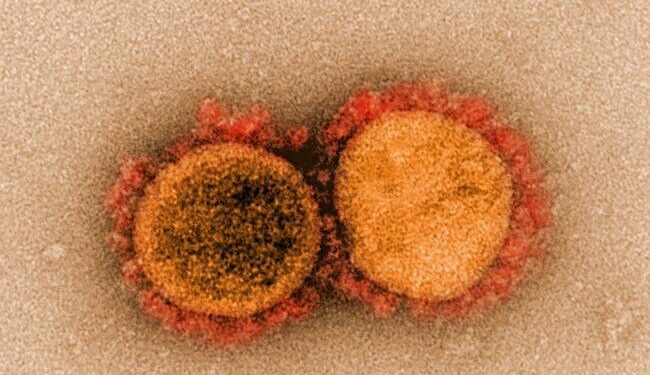Transmission electron micrograph of SARS-CoV-2 viral particles isolated from a patient. Image captured and color-enhanced at the NIAID Integrated Research Facility (IRF) in Fort Detrick, Maryland. Credit: NIAID
Scientists have discovered a mutation in SARS-CoV-2, the virus that causes COVID-19, that plays a key role in its ability to infect the central nervous system. The findings could help scientists understand its neurological symptoms and the mystery of “long COVID,” and could one day even lead to specific treatments to protect and clear the virus from the brain.
The new collaborative study between scientists at Northwestern University and the University of Illinois-Chicago discovered a series of mutations in the SARS-CoV-2 spike protein (the outer part of the virus that helps it enter cells) that enhanced the virus’s ability to infect the brains of mice.
“When we compared the genomes of viruses in the brain and lungs, we found that viruses with a specific deletion of the spike protein were much more efficient at infecting the brains of these animals,” said Judd Hultquist, co-corresponding author and assistant professor of medicine (infectious diseases) and microbiology-immunology at Northwestern University Feinberg School of Medicine. “This was completely unexpected, but very exciting.”
The study is published in Microbiology of nature.
Changes in the spikes help the virus infect different cells in the body
In this study, the researchers infected mice with SARS-CoV-2 and sequenced the genomes of viruses that replicated in the brain rather than the lungs. In the lungs, the Spike protein looked very similar to the virus used to infect mice. In the brain, however, most viruses had a deletion or mutation in a critical region of Spike that dictates how they enter a cell. When viruses with this deletion were used to directly infect the brains of mice, they were largely repaired by the time they reached the lungs.
“For the virus to get from the lungs to the brain, it required changes to the Spike protein, which is already known to determine how the virus enters different cell types,” Hultquist said. “We believe this region of Spike is a critical regulator of whether or not the virus enters the brain, and this could have important implications for treating and managing the neurological symptoms reported by COVID-19 patients.”
SARS-CoV-2 has long been associated with various neurological symptoms, such as loss of smell and taste, “brain fog,” and “long COVID.”
“It remains unclear whether long COVID is caused by direct infection of brain cells or by an unwanted immune response that persists beyond infection,” Hultquist said. “If it is caused by infection of cells in the central nervous system, our study suggests that there may be specific treatments that may be more effective than others in clearing the virus from that compartment.”
More information:
Evolution of SARS-CoV-2 in the murine central nervous system leads to viral diversification, Microbiology of nature (2024). DOI: 10.1038/s41564-024-01786-8. www.nature.com/articles/s41564-024-01786-8
Provided by Northwestern University
Quote: Spike mutations that help SARS-CoV-2 infect the brain discovered (2024, August 23) retrieved August 23, 2024 from
This document is subject to copyright. Apart from any fair dealing for the purpose of private study or research, no part may be reproduced without written permission. The content is provided for informational purposes only.



